Are you preparing for a vendor compliance audit and feeling a bit overwhelmed? You're not aloneâmany companies face similar challenges when it comes to ensuring their vendors meet industry standards and regulations. This article will guide you through the essential steps to create an effective letter template for your vendor compliance audit, making the process seamless and efficient. Ready to delve into how you can streamline your vendor communications? Let's get started!
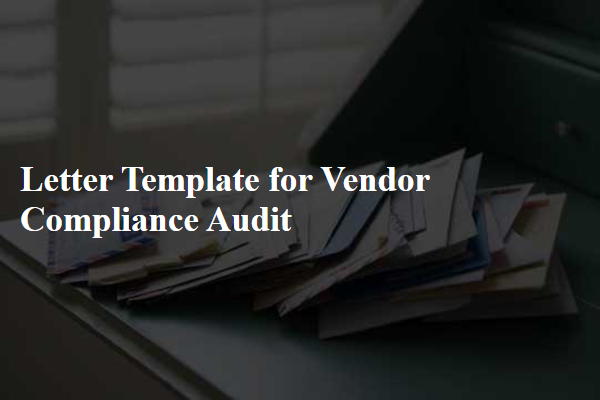
Clear Audit Objectives
Vendor compliance audits aim to ensure that third-party suppliers adhere to company policies, industry regulations, and ethical standards. Clear audit objectives include verifying adherence to contractual terms, such as service level agreements (SLAs) and payment terms, along with evaluating compliance with specific regulations like GDPR or ISO standards. Auditors examine documentation, analyze operational processes, and assess risk management practices. Objectives also encompass identifying potential vulnerabilities in the supply chain or operational procedures and ensuring that vendors maintain adequate controls for data security, employee safety, and environmental sustainability. Enhanced oversight through regular audits fosters accountability, builds strong relationships with vendors, and ultimately supports the long-term strategic goals of the organization.
Specific Compliance Criteria
Vendor compliance audits evaluate adherence to specific criteria set by regulatory agencies or internal guidelines. Common compliance criteria may include financial reporting accuracy, adherence to safety regulations, and environmental sustainability practices. For example, in the food industry, vendors must meet FDA (Food and Drug Administration) standards ensuring that products are free from contaminants, accurately labeled, and stored at proper temperatures (below 4 degrees Celsius for refrigerated items). Additionally, in technology sectors, compliance with GDPR (General Data Protection Regulation) mandates data protection protocols that safeguard user information. The evaluation process may involve documentation reviews, site inspections, and interviews with personnel to confirm understanding and implementation of these criteria. Audit findings typically result in a compliance score, which benchmarks vendor performance against industry standards, helping organizations mitigate risks associated with non-compliance.
Detailed Audit Process and Schedule
The vendor compliance audit process typically involves a systematic evaluation of a vendor's adherence to established guidelines, standards, and regulations. During this audit, specific documents such as contracts, financial records, and operational procedures undergo thorough examination. A comprehensive checklist is employed, covering areas such as safety practices, quality assurance measures, and ethical compliance. The audit schedule may span several days, with initial meetings taking place on Day 1 at the vendor's corporate headquarters in Chicago, facilitating discussions with key stakeholders. Subsequent on-site evaluations occur from Day 2 to Day 4, incorporating interviews with employees, review of production processes at the manufacturing facility, and assessment of supply chain management practices. Detailed findings will culminate in a formal report, which is expected to be delivered within two weeks following the audit's conclusion, ensuring timely communication for any necessary corrective actions.
Required Documentation and Deadlines
Vendor compliance audits require meticulous documentation to ensure adherence to industry standards and regulations. Essential documents include vendor registration forms, Certificates of Insurance (COI), and compliance checklists, which detail adherence to policies such as ISO 9001 for quality management or OSHA regulations for workplace safety. Deadlines for submission typically fall within 30 days from the initial audit notification, ensuring timely review by the compliance team. Additional required documents may consist of financial statements, tax filings, and records of previous audits, all crucial for demonstrating fiscal responsibility and operational competency in sectors such as logistics or manufacturing. Maintaining clear communication about these requirements can streamline the audit process and foster positive vendor relationships.
Contact Information and Support Resources
During a vendor compliance audit, accurate contact information is essential for effective communication. Key elements include primary contact names, titles, phone numbers, and email addresses, ensuring easy access to responsible personnel. Support resources should encompass documentations such as compliance guidelines, training materials on regulatory requirements, and links to online support platforms. Providing a well-organized resource directory can enhance the audit process, enabling seamless collaboration between auditors and vendors. Furthermore, establishing clear points of contact for inquiries or issues during the audit can facilitate timely resolutions, ultimately leading to a more efficient compliance assessment.
Letter Template For Vendor Compliance Audit Samples
Letter template of vendor compliance audit notification for scheduled audit
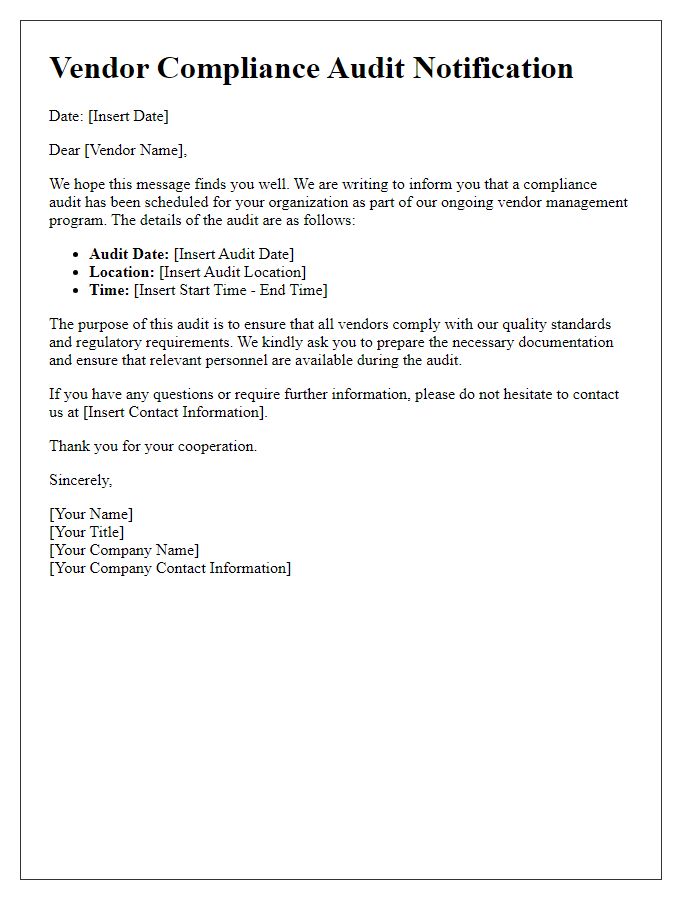
Letter template of vendor compliance audit follow-up on outstanding issues
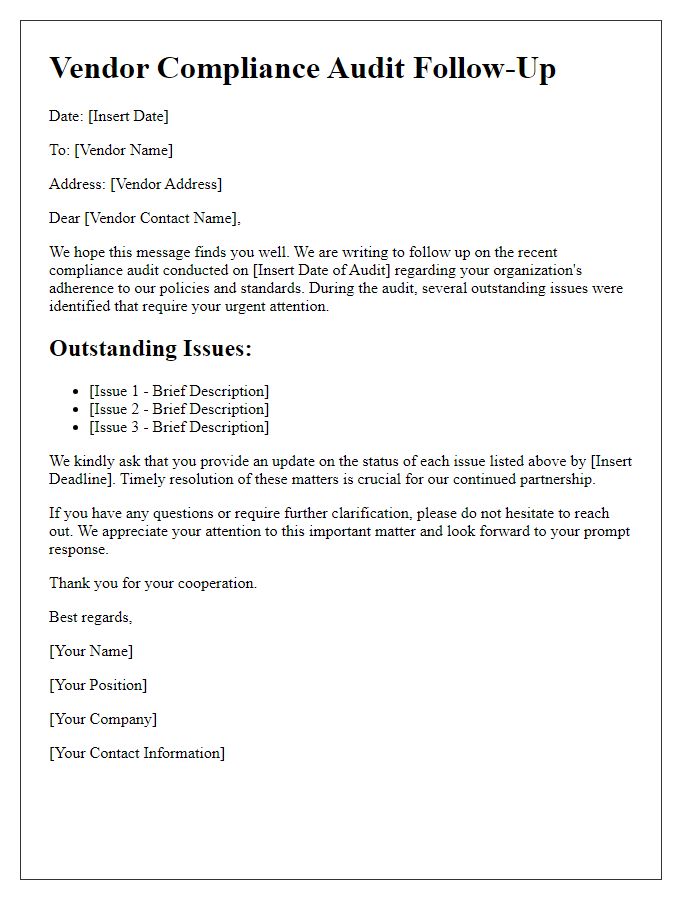
Letter template of vendor compliance audit clarification on requirements

Letter template of vendor compliance audit reminder for upcoming deadlines
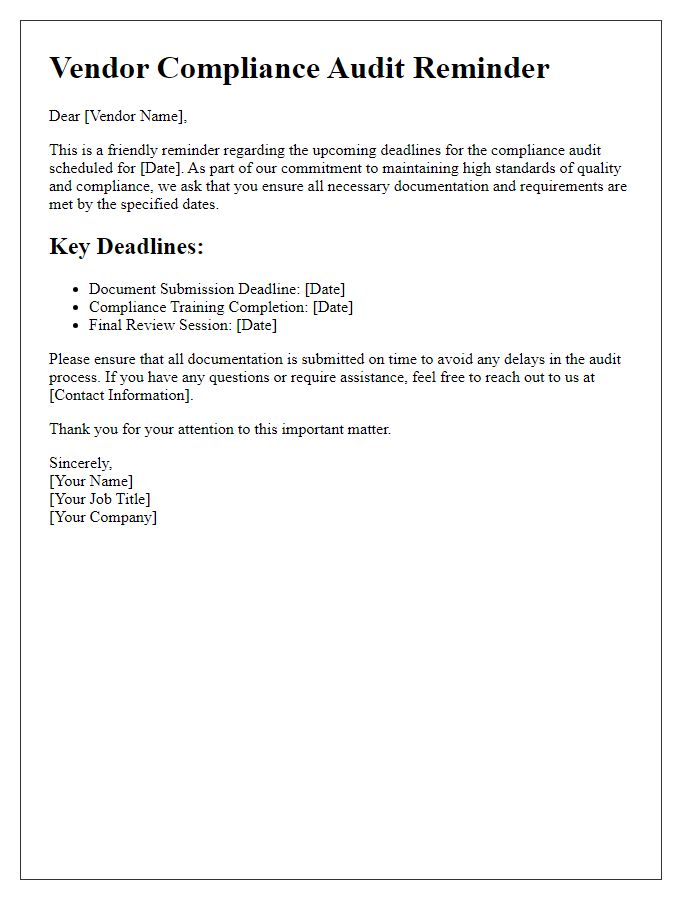

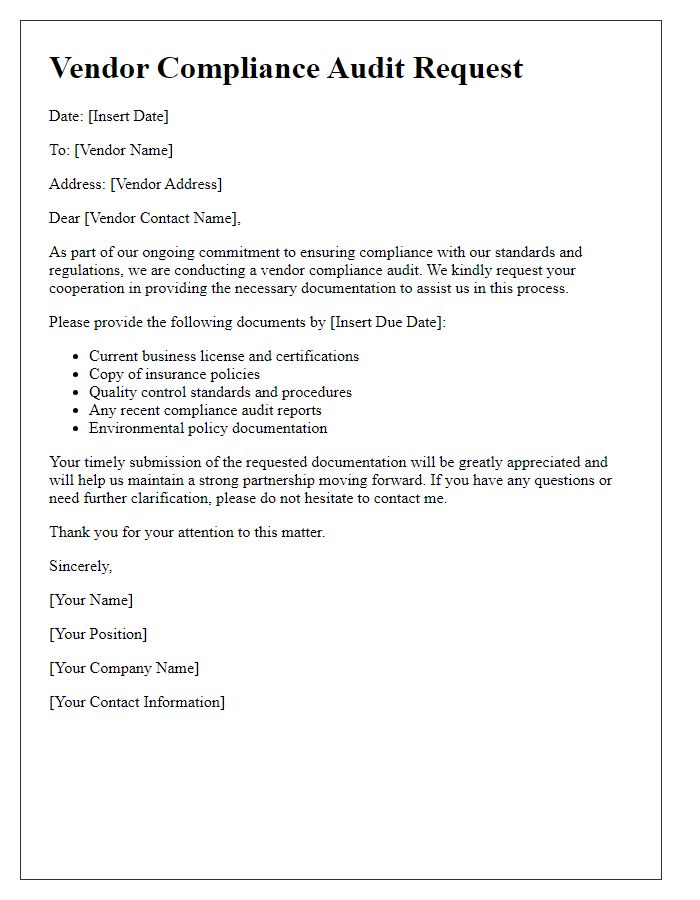

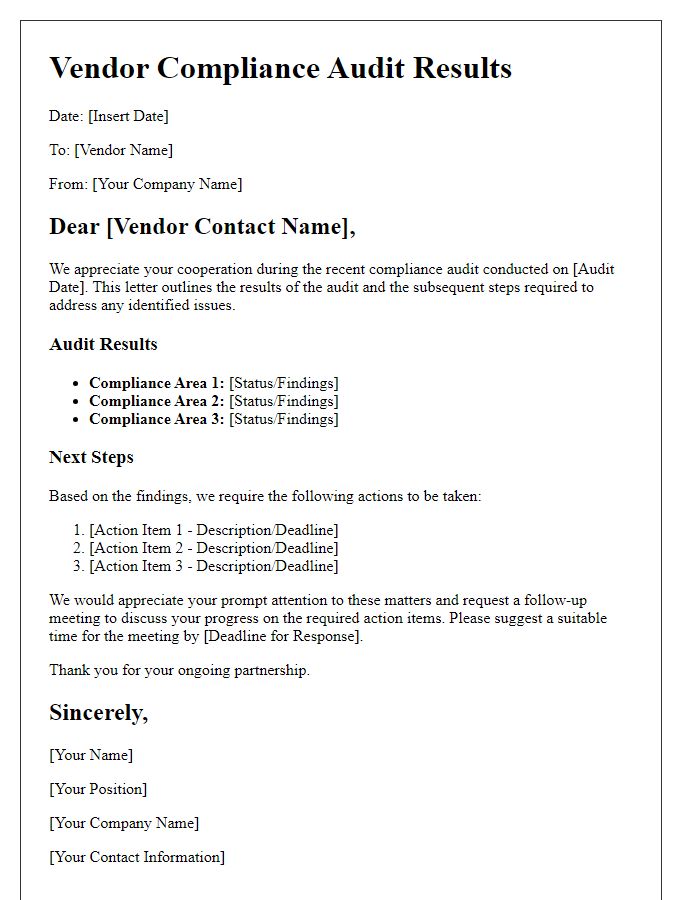
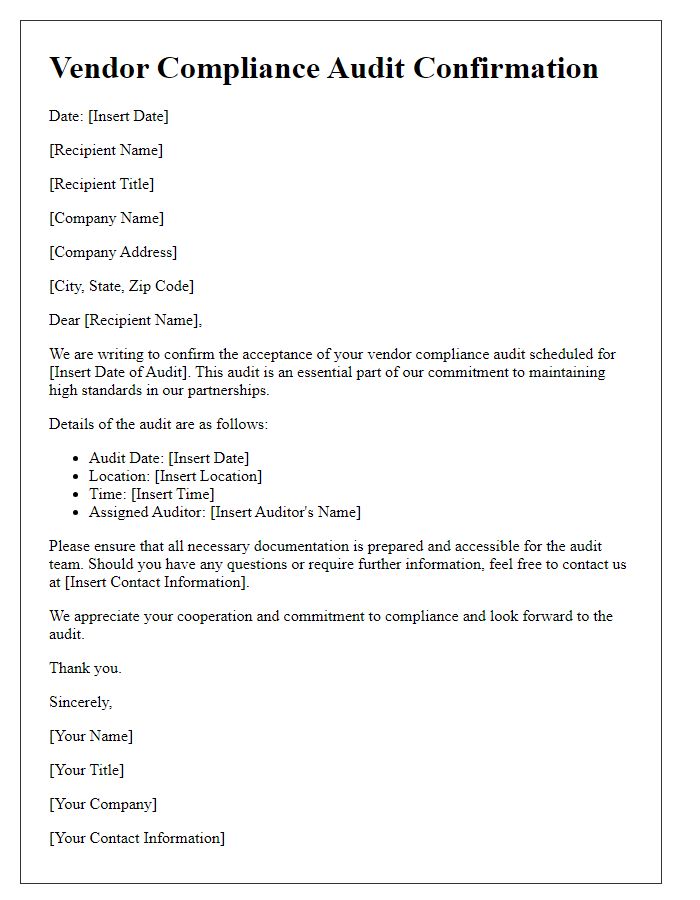

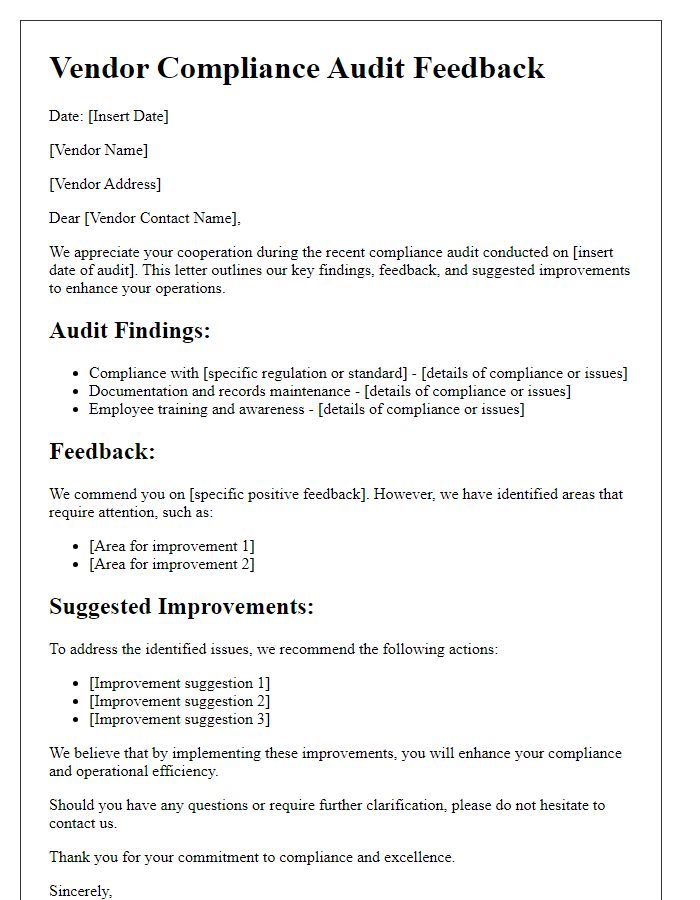


Comments